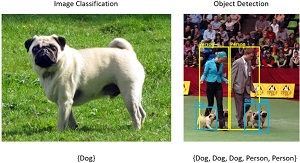News
ML.NET Improves Object Detection
Microsoft improved the object detection capabilities of its ML.NET machine learning framework for .NET developers, adding the ability to train custom models with Model Builder in Visual Studio.
ML.NET is an open source, cross-platform machine learning framework, working on Windows, Linux and macOS. It works with other Microsoft ML components and offerings including:
- Model Builder: a visual interface used to build, train and deploy custom ML models in Visual Studio without the need for deep ML expertise.
 [Click on image for larger, animated GIF view.] Model Builder in Animated Action in Visual Studio (source: Microsoft).
[Click on image for larger, animated GIF view.] Model Builder in Animated Action in Visual Studio (source: Microsoft).
- ML.NET CLI: a cross-platform command-line interface.
- AutoML: a generic term ("the process of automating the time consuming, iterative tasks of ML model development") with a specific implementation coming from Microsoft Research, which designs "probabilistic ML models to guide (automated) experimental decisions and meta-learning to reduce the sample complexity and transfer knowledge across related datasets or problems." It comes with Azure Machine Learning, a cloud service to build and deploy ML models faster.
In the monthly September update to ML.NET -- bringing it to v1.5.2 -- Microsoft introduced:
- The ability to train custom object detection models via Model Builder, leveraging Azure and AutoML
- The ability to locally train image classification models with the ML.NET CLI
"While previously ML.NET offered the ability to consume pre-trained TensorFlow and ONNX models for object detection via the ML.NET API, you can now use Model Builder in Visual Studio to train custom object detection models with the power of Azure and AutoML," said Bri Achtman, program manager, .NET, in a Sept. 25 blog post.
Object detection is a useful adjunct improvement to image classification as it can, for example, identify a person and a dog in the same image, rather than just classify an image of a dog as a dog, as illustrated here:
 [Click on image for larger view.] Image Classification/Object Detection (source: Microsoft).
[Click on image for larger view.] Image Classification/Object Detection (source: Microsoft).
Use cases for object detection include:
- Self-driving cars
- Robotics
- Face detection
- Workplace safety
- Object counting
- Activity recognition
The new ability to locally train custom image classification models via the ML.NET CLI, meanwhile, adds to the tool's previous abilities including classification, regression and recommendation.
Achtman goes into detail about using the new functionality in her post and much more information about the v1.5.2 update can be found in the release notes.
About the Author
David Ramel is an editor and writer at Converge 360.